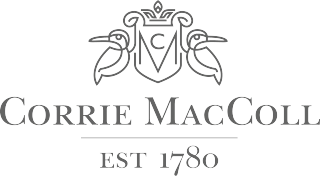Innovative Solutions for Molding Rubber Applications in Global Manufacturing
In today's rapidly evolving manufacturing landscape, the demand for innovative solutions in molding rubber applications has never been more critical. According to a report by MarketsandMarkets, the global rubber processing market is expected to reach $43.64 billion by 2025, registering a CAGR of 3.3% from 2020. This growth underlines the significance of optimized molding techniques in enhancing product quality and production efficiency. Molding rubber, a process integral to various industries such as automotive, aerospace, and consumer goods, necessitates cutting-edge approaches to meet rigorous performance standards and sustainability goals. As manufacturers increasingly pivot towards advanced technologies like 3D printing and automation, the ability to innovate in molding rubber not only stands out as a competitive advantage but is essential for meeting the diverse and dynamic needs of the global marketplace.

The Role of Advanced Technology in Rubber Molding Solutions
Advanced technology is playing a pivotal role in revolutionizing rubber molding solutions, significantly enhancing efficiency and precision in global manufacturing. Recent developments illustrate how companies are embracing high-tech materials to create innovative composite solutions that cater to various industrial needs. For instance, manufacturers are increasingly leveraging advanced techniques to develop specialized rubber products tailored for sectors like medical, construction, and railway. This shift towards technology-driven processes not only optimizes production but also ensures the delivery of high-quality products that meet stringent industry standards.
The establishment of technology centers, such as the one in Germany, exemplifies the industry's commitment to innovation. Equipped with state-of-the-art injection molding machines, these centers facilitate customer trials and comprehensive training, enabling businesses to harness the latest advancements in rubber molding technology. Additionally, with projections indicating substantial growth in the injection molding market, it’s clear that the integration of cutting-edge technology will not only enhance product quality but will also shape the future landscape of both the rubber and plastic industries.
As these practices continue to evolve, the emphasis on sustainable solutions and smart manufacturing will further propel the industry forward, meeting the demands of a rapidly changing global market.
Key Benefits of Innovative Rubber Molding Techniques
Innovative rubber molding techniques are revolutionizing global manufacturing by offering enhanced efficiency and superior product quality. One of the key benefits is the ability to produce complex shapes with precise tolerances that traditional methods struggle to achieve. This level of accuracy not only reduces material waste but also minimizes the need for extensive post-processing, ultimately streamlining production timelines. Advanced technologies such as 3D printing and liquid silicone rubber (LSR) molding allow manufacturers to create intricate designs that cater to diverse industrial needs, from automotive parts to medical devices.
Another significant advantage of these innovative techniques is their adaptability and scalability. Manufacturers can easily adjust production processes to accommodate changes in design or demand without incurring significant costs or lengthy delays. This flexibility is essential in today’s fast-paced market, where consumer preferences constantly evolve.
Additionally, improved materials and processes enhance the durability and performance of rubber products, ensuring they meet the increasing standards of industries focused on sustainability and longevity. By investing in these modern rubber molding solutions, manufacturers position themselves to not only keep pace with industry trends but also to lead in innovation and quality.
Exploring Material Options for Enhanced Rubber Products
In the rapidly evolving landscape of global manufacturing, the quest for enhanced rubber products has led to a deep exploration of material options. As industries strive for higher durability, flexibility, and performance, innovative materials have emerged as crucial components in molding rubber applications. These new materials not only meet stringent industry standards but also offer improved resistance to wear and environmental factors, making them ideal for various applications, ranging from automotive to consumer goods.
One promising approach involves the integration of advanced composites and additives that can transform traditional rubber properties. For instance, the incorporation of nanoparticles can significantly enhance the strength and elasticity of rubber, enabling products to withstand more challenging conditions without compromising integrity. Additionally, bio-based and sustainable materials are gaining traction, appealing to manufacturers focused on reducing their environmental footprint while maintaining product quality. As companies continue to embrace these innovative solutions, the potential for developing superior rubber products that meet the demands of a global market expands significantly.

Sustainable Practices in Rubber Manufacturing Processes
Sustainable practices in rubber manufacturing processes are becoming increasingly vital as industries worldwide shift towards ecological responsibility. The rubber manufacturing sector has traditionally faced criticism for its environmental impact, often due to the heavy use of natural resources and chemicals. However, innovative solutions are emerging that not only meet production demands but also align with sustainability goals. Companies are exploring the use of eco-friendly materials, such as bio-based rubbers derived from renewable resources, which reduce reliance on petroleum-based alternatives and mitigate adverse environmental effects.
In addition to material innovation, manufacturers are rethinking their processes to enhance efficiency and reduce waste. Techniques like closed-loop systems and the integration of advanced recycling methods are being adopted to minimize the ecological footprint. By capturing and reprocessing waste rubber, manufacturers can significantly lower resource consumption while simultaneously decreasing emissions. Furthermore, implementing energy-efficient technologies and utilizing renewable energy sources in production facilities can lead to substantial reductions in carbon footprints, contributing to a more sustainable future for the rubber industry.

Case Studies: Success Stories in Global Rubber Applications
In recent years, global manufacturing has seen remarkable innovations in rubber applications, showcasing the potential for both sustainability and efficiency. One noteworthy case is the groundbreaking method developed by Eldar Rizayev, a young entrepreneur from Turkmenistan, who has discovered a low-cost solution for recycling rubber and plastic waste. This initiative not only addresses the urgent environmental pollution caused by industrial and household waste but also aligns with industry trends toward circular economy practices. According to a report by Smithers, the global rubber recycling market is expected to reach $6.1 billion by 2025, illustrating the growing demand for sustainable practices in rubber manufacturing.
Rizayev's innovation is just one example of how entrepreneurial spirit can drive positive change in the rubber industry. His efforts have garnered attention for their potential to convert waste into reusable materials, setting a precedent in the market. Studies from the International Rubber Study Group indicate that the adoption of innovative recycling processes could significantly reduce the carbon footprint of rubber manufacturing, contributing to a more eco-friendly industry. As companies across the globe seek to enhance their sustainability credentials, Rizayev's success story serves as an inspiration for other innovators in the field, demonstrating the power of creative solutions in tackling one of today's most pressing environmental challenges.
Innovative Solutions for Molding Rubber Applications in Global Manufacturing
Related Posts
-

Exploring the Versatility and Applications of Best Santoprene Rubber in Diverse Industries
-

How to Optimize the Use of Normal Butyl Rubber for Enhanced Industrial Performance
-

Solutions for Achieving Optimal Performance with Best Santoprene Rubber
-

Challenges Faced in Waterjet Cutting Rubber Processes and Their Impact on Production Efficiency
-

Exploring Butyl Rubber Innovations Shaping Global Supply Chains in 2025
-

Ultimate Guide to Sourcing High-Quality TPR Rubber Suppliers: Essential Checklist for Global Buyers

